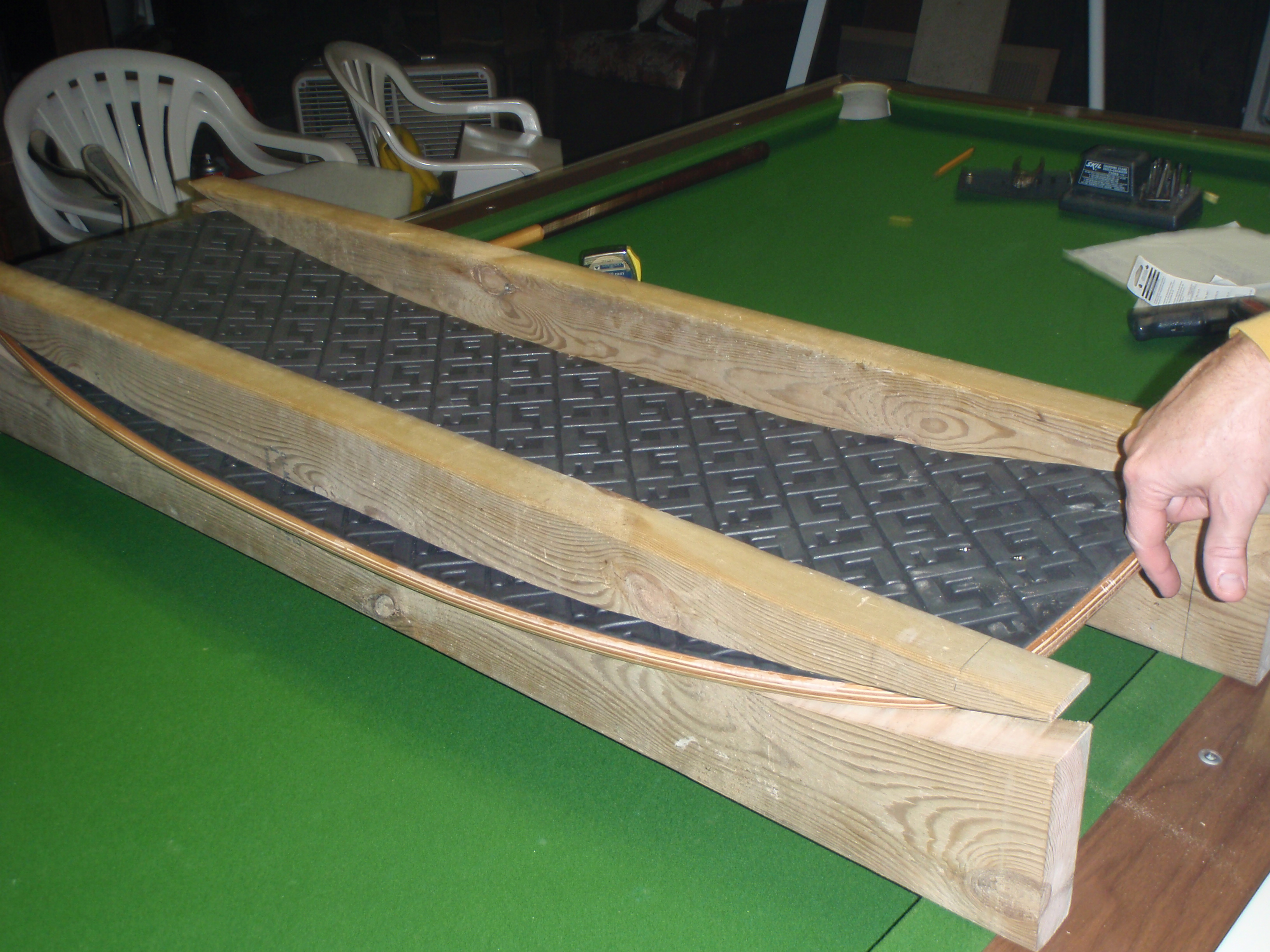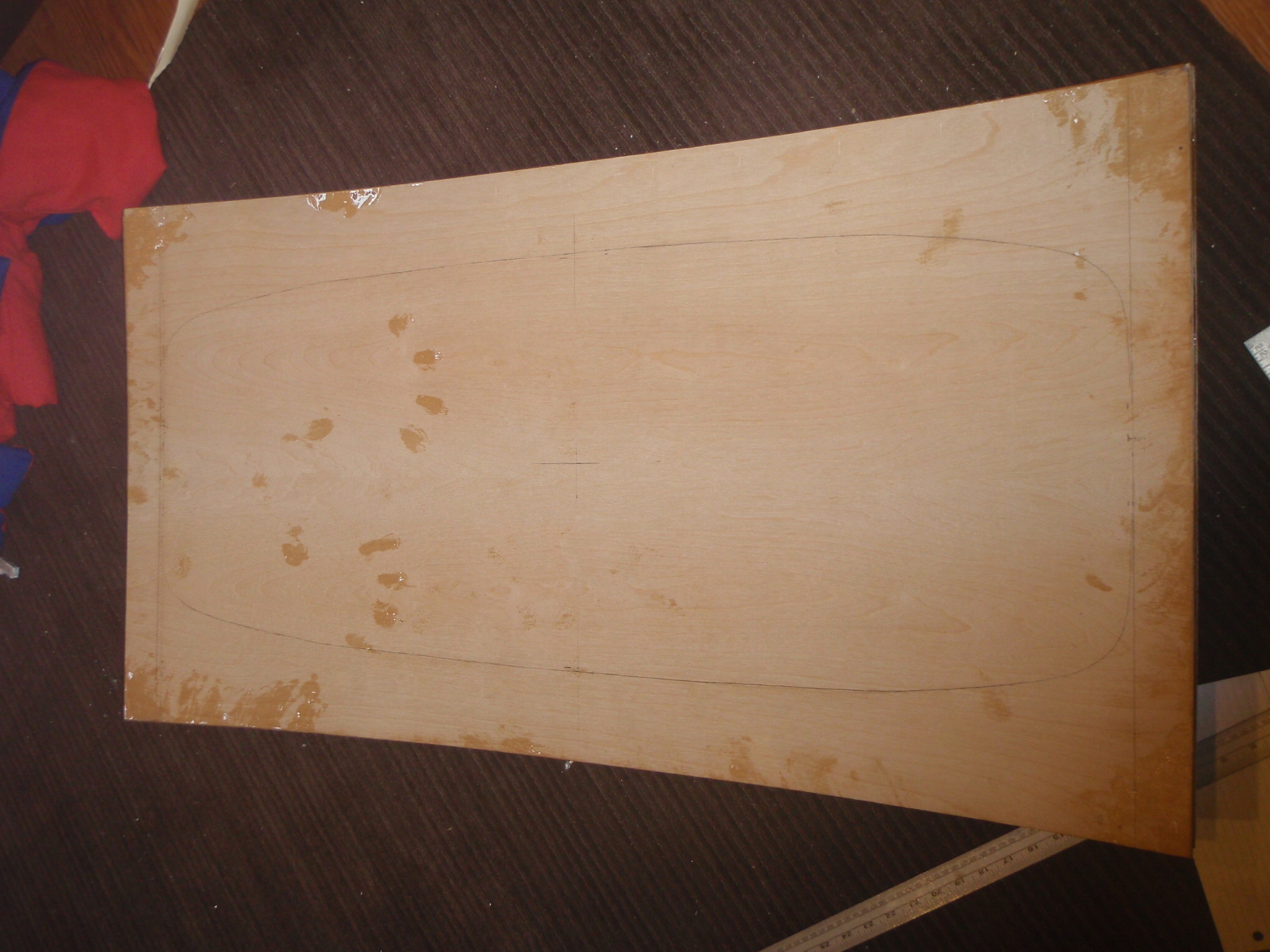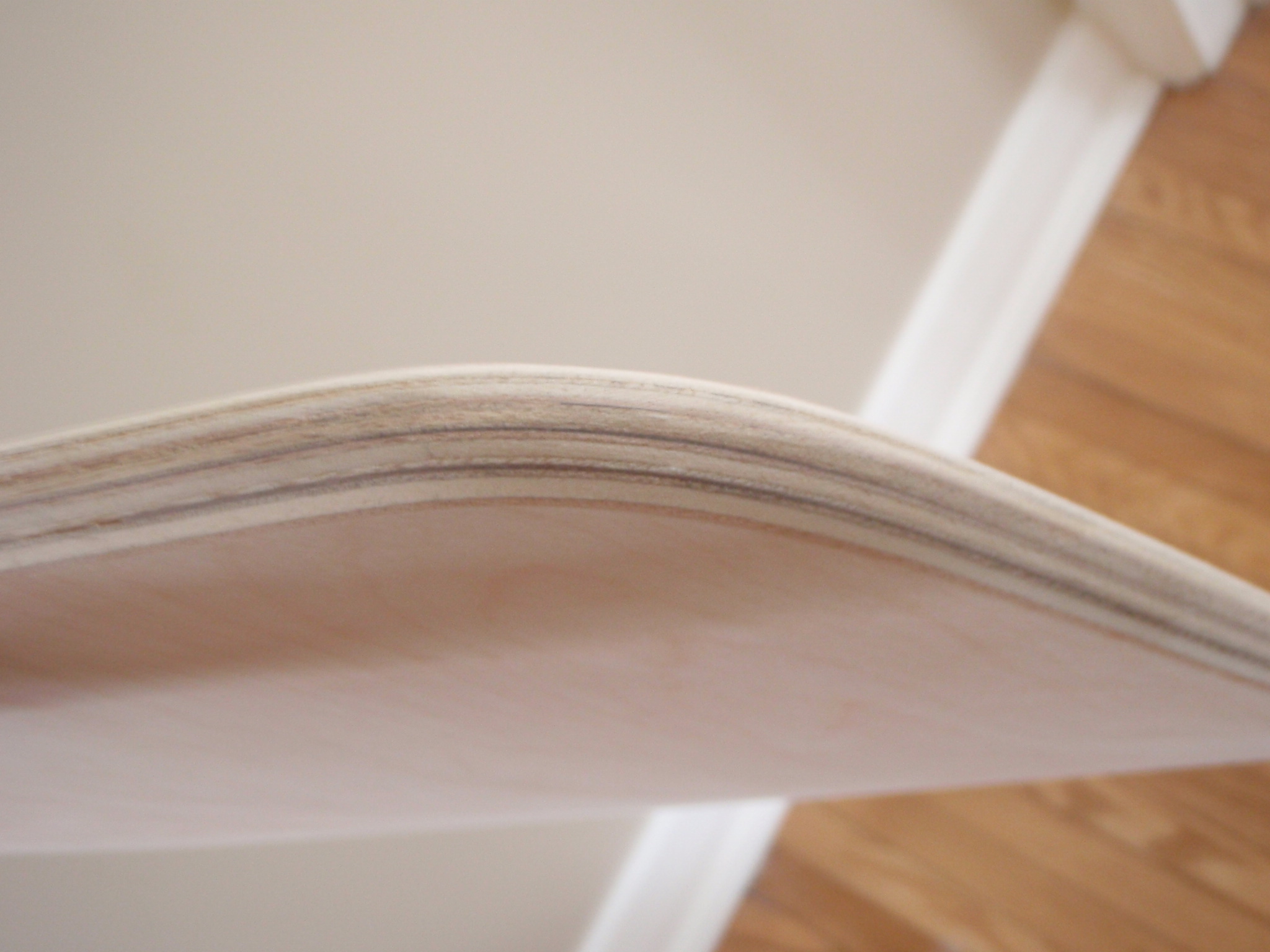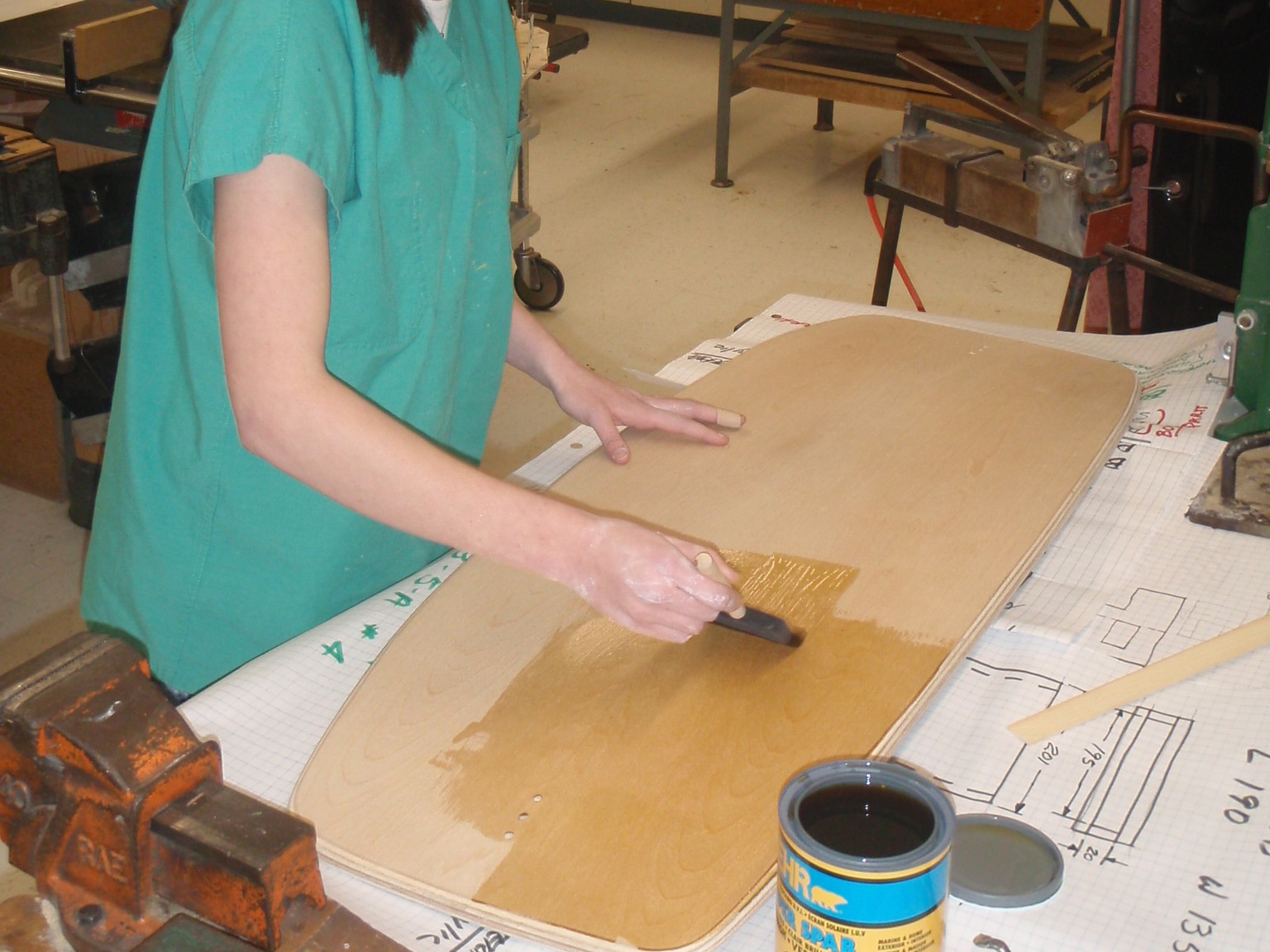This is how I went about making my very own wakeskate, from design, to building a jig, to laminating and finishing the board, to riding it behind the boat.



The first thing you need to do is make a jig to form your board. Start by tracing out the shape of the rocker (curvature of the board) onto two 2x4s. There are many different types of rockers. I did mine based on the Liquidforce Faction 42 because that was what I was used to riding.
Using a jig saw, cut the 2x4s along the lines you drew so that you end up with two “positive” pieces and two “negative” pieces as shown in the first photo.
Next, mount a set of 2×4 spacers between the two top (“positive”) pieces and another set between the bottom (“negative”) pieces, as in the second photo. The spacing should be wider than the board size you intend to make. On mine this was approximately 2′ wide.
Finally, screw a thin piece of particle board or 1/8″ plywood to the facing sides of the jig halves as in the third photo. When the two halves are pressed together they will bend whatever you put inside to the curvature you have designed.

Once the jig is complete it’s time to laminate your own plywood. I used five 1/8″-thick boards. Four of them were birch (for the beautiful woodgrain) and the last was a 1/8″ board of mahogany to give the centre of my board extra strength. (Plus, it looks cool.)
Use marine epoxy to laminate the wood sheets together. It comes in a part A and B; mix these together in equal parts and apply. Make sure to spread a thin coat completely over each board. If it is too thick it will just ooze out the sizes when you clamp it.
I used 5′ clamps because that’s all I had available to me. I’m sure it’s overkill; you would not need clamps as large as these but you want to make sure you have lots of even pressure on your jig. Leave the epoxy to dry for longer than it says on the instructions because you want it to be completely solid when you do the next steps.
Epoxy is toxic. Make sure to use gloves and a mask and follow all the safety instructions!

Once the epoxy has cured, you can take the plywood that is now bent to your desired rocker shape out of the jig. The next step is to draw out your board pattern. Draw a rectangle and add your rounded corners. I suggest that once you have one corner you like, make a template on paper and trace it for the other 3 corners.
Remember: measure twice, cut once!
After you are happy with the board’s shape, use a jig saw to cut out your board. Try to keep your cut perpendicular to the surface of the wood. Have someone help you as you move along the rocker curve.

After using the jigsaw, you have to round the edges with a router. Look through router bits to find a curvature that works with your board.
This part is really hard because of the board’s rocker shape, and it is easier to use the router on the convex side of the board and then sand the edges on the other side down with a palm sander. It won’t be to the same curvature, but it will still look nice.

Painting is next! To prep the wood, brush on a layer of Varathane. Once that dries, all the wood fibres will stand up and it will become rough. Sand those down to a smooth finish and put on another layer of Varathane. Sand that down once again and repeat one more time if necessary. By the end it should be super smooth.
I cut a stencil out of a large piece of acetate paper with an X-Acto knife. I then used a spray adhesive to stick it onto the bottom of the board. I sprayed on car paint to ensure that the paint would be able to endure being used in the water. Then I peeled off the acetate to reveal my design.
I wanted the wood to show through so i did a simple design. You can easily paint the whole back if desired.

After the colour paint layer, another layer or two of Varathane should be applied to seal in the paint and give it a final smooth layer.
The next step is to apply the grip tape. I went to my local boardshop and bought it on a roll. It is the same grip tape that is used on skateboard decks. Any pattern will work. I cut out a pattern with an X-Acto knife and then laid it down at an angle (refer to the second photo). This part is very hard to do.
To trim the edges of the tape, take a rasp and file around the edges. Finish it up with sandpaper and more Varathane applied with a paintbrush between the strips of grip tape.

Once the grip tape is set in place you need to buy some fins. Some people prefer their boards without fins. I used a set of Ronix fins I bought online. Drill holes and screw them in. When you buy fins online they should come with the correct screws.
Then, it’s ready to ride!
And wipe out on!! ENJOY!